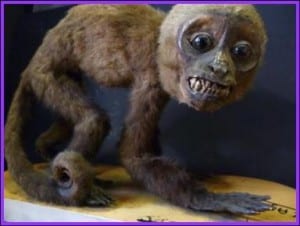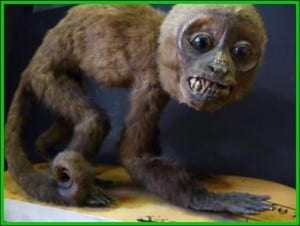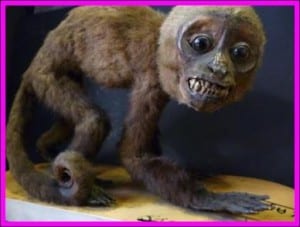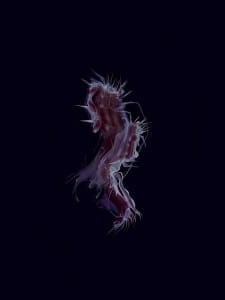Specimen of the Week: Week 147
By Jack Ashby, on 4 August 2014
 Museums are full of mysteries (particularly when you are as cursed with historically challenging documentation, as many university museums are). For example, why do we have a plum in a jar? Why don’t we have a wolf, one of the world’s most widespread mammals? Who ate our Galapagos tortoise? Why do we only have the heart and rectum of a dwarf cassowary? Why is scary monkey (pictured) so scary?
Museums are full of mysteries (particularly when you are as cursed with historically challenging documentation, as many university museums are). For example, why do we have a plum in a jar? Why don’t we have a wolf, one of the world’s most widespread mammals? Who ate our Galapagos tortoise? Why do we only have the heart and rectum of a dwarf cassowary? Why is scary monkey (pictured) so scary?
Not to mention, why did we put all those moles in that jar?
After ten years of working here, I am confident that there is no greater mystery in the Grant Museum than this one: why would you stick a battery in a dead animal?
This week’s Specimen of the Week is… (more…)
 Close
Close







